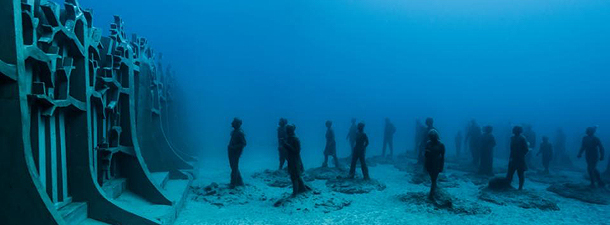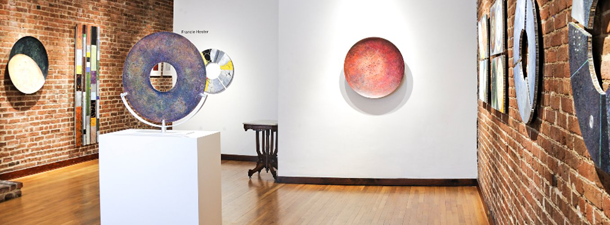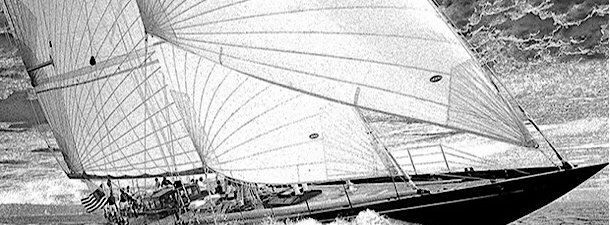Interview with Jason deCaires Taylor, underwater sculptor and creator of ‘Museo Atlantico’

Jason deCaires Taylor is an artist with a very unique style and mission—he creates sculptures that are intended to be placed underwater to help foster the growth of coral reefs which benefit the ecosystem. In early 2017, the final phase of his monumental sculptural project known as ‘Museo Atlantico’ was completed and inaugurated by Pedro San Gines who is the president of the island of Lanzarote, Spain.
 “Museo Atlantico” consists of more than three-hundred sculptures that are situated over twelve underwater installations. Many of these works are huge—such as a one-hundred-ton wall, a botanical sculpture garden, and more than two-hundred life-sized figures. It is Jason’s first foray into truly large-scale work that include whimsical features such as businessmen in suits playing in a child’s playground and hybrid human-animal creatures that seem to have emerged from the pages of a fantasy novel. Meanwhile “Human Gyre” is a segment of the installation that features more than two-hundred figures sculptured from the images of people of all shapes, sizes, and ages. The figures are positioned in a circular, multi-layered, pyre which essentially represents the shape of coral and represents the relationship between human beings and coral reefs and its inhabitants—lifeforms that all exist on the same planet. Essentially, “Museo Atlantico” was created as a way to get people to appreciate the need to value and protect this fragile ecosystem in order to save ourselves; a theme which is constant in most of Jason’s artwork.
“Museo Atlantico” consists of more than three-hundred sculptures that are situated over twelve underwater installations. Many of these works are huge—such as a one-hundred-ton wall, a botanical sculpture garden, and more than two-hundred life-sized figures. It is Jason’s first foray into truly large-scale work that include whimsical features such as businessmen in suits playing in a child’s playground and hybrid human-animal creatures that seem to have emerged from the pages of a fantasy novel. Meanwhile “Human Gyre” is a segment of the installation that features more than two-hundred figures sculptured from the images of people of all shapes, sizes, and ages. The figures are positioned in a circular, multi-layered, pyre which essentially represents the shape of coral and represents the relationship between human beings and coral reefs and its inhabitants—lifeforms that all exist on the same planet. Essentially, “Museo Atlantico” was created as a way to get people to appreciate the need to value and protect this fragile ecosystem in order to save ourselves; a theme which is constant in most of Jason’s artwork.
 Jason deCaires Taylor was born in 1974 to an English father and Guyanese mother. He grew up in Europe and Asia, where he spent much of his early childhood exploring the coral reefs of Malaysia. Educated in the south east of England, Jason graduated from the London Institute of Arts in 1998 with a BA Honors in Sculpture and went on to become a fully qualified diving instructor and underwater naturalist. With over twenty years of diving experience under his belt, Jason is also an award-winning underwater photographer who is lauded for his dramatic images that capture the metamorphosing effects of the ocean on his evolving sculptures. “I was always interested in the idea of creating underwater sculptures,” Jason explained in a recent interview, “but I didn’t have the opportunity to do so while I was living in London. It wasn’t until I moved to Grenada that I got a chance to make sculptures for the water.”
Jason deCaires Taylor was born in 1974 to an English father and Guyanese mother. He grew up in Europe and Asia, where he spent much of his early childhood exploring the coral reefs of Malaysia. Educated in the south east of England, Jason graduated from the London Institute of Arts in 1998 with a BA Honors in Sculpture and went on to become a fully qualified diving instructor and underwater naturalist. With over twenty years of diving experience under his belt, Jason is also an award-winning underwater photographer who is lauded for his dramatic images that capture the metamorphosing effects of the ocean on his evolving sculptures. “I was always interested in the idea of creating underwater sculptures,” Jason explained in a recent interview, “but I didn’t have the opportunity to do so while I was living in London. It wasn’t until I moved to Grenada that I got a chance to make sculptures for the water.”
 In 2006 Jason finally had the opportunity to establish the world’s first underwater sculpture park. Situated off the west coast of Grenada in the West Indies it is now listed as one of the “Top 25 Wonders of the World” by National Geographic and was instrumental in the creation of a National Marine Protected Area by the local Government. The project began after Hurricane Ivan damaged the islands and many of the coastal reefs. Jason decided to live-cast local people in position that would create an artificial reef. “The first sculptures were in the shapes of reclining people so they were very close to the sand,” Jason stated. “Since the sculptures were essentially lying in the sand it actually made it more difficult for marine life to grow on them because the sand would cover the statues with the tides. I decided to make my later models standing up since the taller they are the better the chances are that sea life will grow on them.” Since that initial project, Jason has placed nearly 800 sculptures in the water. Most of his sculptures depict people and he frequently casts the faces of individuals whom he finds interesting. “I’m always looking at faces,” he confessed. “If I see someone who I think would make a good model for a sculpture I get their information and see if they’re interested in being featured.”
In 2006 Jason finally had the opportunity to establish the world’s first underwater sculpture park. Situated off the west coast of Grenada in the West Indies it is now listed as one of the “Top 25 Wonders of the World” by National Geographic and was instrumental in the creation of a National Marine Protected Area by the local Government. The project began after Hurricane Ivan damaged the islands and many of the coastal reefs. Jason decided to live-cast local people in position that would create an artificial reef. “The first sculptures were in the shapes of reclining people so they were very close to the sand,” Jason stated. “Since the sculptures were essentially lying in the sand it actually made it more difficult for marine life to grow on them because the sand would cover the statues with the tides. I decided to make my later models standing up since the taller they are the better the chances are that sea life will grow on them.” Since that initial project, Jason has placed nearly 800 sculptures in the water. Most of his sculptures depict people and he frequently casts the faces of individuals whom he finds interesting. “I’m always looking at faces,” he confessed. “If I see someone who I think would make a good model for a sculpture I get their information and see if they’re interested in being featured.”
 In 2009 Jason co-founded MUSA (Museo Subacuático de Arte), a monumental museum with a collection of over five-hundred sculptural works that are submerged off the coast of Cancun, Mexico. The location has since been described by Forbes Magazine as one of the world’s most unique travel destinations. Both these ambitious, permanent public works have a practical, functional aspect; facilitating positive interactions between people and fragile underwater habitats while at the same relieving pressure on natural resources. Today, Jason lives in the Canary Islands and is actively placing sculptures in the waters around the area in hopes of expanding its coral reefs.
In 2009 Jason co-founded MUSA (Museo Subacuático de Arte), a monumental museum with a collection of over five-hundred sculptural works that are submerged off the coast of Cancun, Mexico. The location has since been described by Forbes Magazine as one of the world’s most unique travel destinations. Both these ambitious, permanent public works have a practical, functional aspect; facilitating positive interactions between people and fragile underwater habitats while at the same relieving pressure on natural resources. Today, Jason lives in the Canary Islands and is actively placing sculptures in the waters around the area in hopes of expanding its coral reefs.
 Jason’s art is like no other. It is a paradox of creation constructed to be assimilated by the ocean and transformed from inert objects into living, breathing coral reefs. His art portrays human intervention as both positive and life-encouraging life-enhancing. Alas, this is not always the case with coral reefs since human intervention has sometimes led to disaster. For instance, conservationists once attempted to use discarded car tires as a basis for forming reefs. Instead, when a storm blew up the tires sailed through the water and slammed into existing coral reefs; thereby breaking them and doing damage instead of creating growth.
Jason’s art is like no other. It is a paradox of creation constructed to be assimilated by the ocean and transformed from inert objects into living, breathing coral reefs. His art portrays human intervention as both positive and life-encouraging life-enhancing. Alas, this is not always the case with coral reefs since human intervention has sometimes led to disaster. For instance, conservationists once attempted to use discarded car tires as a basis for forming reefs. Instead, when a storm blew up the tires sailed through the water and slammed into existing coral reefs; thereby breaking them and doing damage instead of creating growth.
 Whilst a movement to use old railway cars to entice barnacles, fish, and other marine life, in the waters off the coast of New York and New Jersey has been largely successful, Jason is quite skeptical of using metal in coral reef restoration efforts. He stated, “I prefer concrete and it needs to be a special kind of concrete that matches adheres to the PH of the water at the location. Materials and locations have to be well researched before a project like this can be undertaken successfully.” A true conversationalist, Jason has spent years diligently studying and researching oceans and coral reefs and he intentionally places his sculptures in areas that are barren. “I’m careful to put them in areas that need additional marine life without disturbing an active reef that already has a healthy ecosystem,” Jason explained. He has also works closely with marine biologists and conversation organizations to ensure the best results.
Whilst a movement to use old railway cars to entice barnacles, fish, and other marine life, in the waters off the coast of New York and New Jersey has been largely successful, Jason is quite skeptical of using metal in coral reef restoration efforts. He stated, “I prefer concrete and it needs to be a special kind of concrete that matches adheres to the PH of the water at the location. Materials and locations have to be well researched before a project like this can be undertaken successfully.” A true conversationalist, Jason has spent years diligently studying and researching oceans and coral reefs and he intentionally places his sculptures in areas that are barren. “I’m careful to put them in areas that need additional marine life without disturbing an active reef that already has a healthy ecosystem,” Jason explained. He has also works closely with marine biologists and conversation organizations to ensure the best results.
 It can take between ten days to several years for a sculpture to become covered by marine life depending on where it is situated. Generally, algae particles are the first thing to cover the statue, followed by reeds and, finally, coral. Jason has also started paying extra attention to the design of his sculptures and he intentionally adds crevices where fish, eels, crabs, sea urchins and other creatures can hide. In fact, Jason’s website is filled with information—and a breathtaking video—about the kinds of plants and animals that make his artwork home. “Without a doubt, the best part of the process is watching the ocean life overtake the art,” Jason proclaimed. “I tend to get excited about my newest work but, honestly, it’s truly thrilling to go back and see my older work and what is now living on or in it. It’s great to see fish take refuge in my work since that proves that the art is fulling its objective.”
It can take between ten days to several years for a sculpture to become covered by marine life depending on where it is situated. Generally, algae particles are the first thing to cover the statue, followed by reeds and, finally, coral. Jason has also started paying extra attention to the design of his sculptures and he intentionally adds crevices where fish, eels, crabs, sea urchins and other creatures can hide. In fact, Jason’s website is filled with information—and a breathtaking video—about the kinds of plants and animals that make his artwork home. “Without a doubt, the best part of the process is watching the ocean life overtake the art,” Jason proclaimed. “I tend to get excited about my newest work but, honestly, it’s truly thrilling to go back and see my older work and what is now living on or in it. It’s great to see fish take refuge in my work since that proves that the art is fulling its objective.”
 To date, numerous publications and documentaries have featured Jason’s extraordinary work including the BBC, CNN, USA Today, The Guardian, Vogue, New Scientist and the Discovery Channel, yet nothing can quite do justice to the ephemeral nature of his art; for each actual visit to his sites is both unique and subject to the dynamic, fluctuating environment of the ocean. His pioneering public art projects are not only examples of successful marine conservation, but works of art that seek to encourage environmental awareness, instigate social change and lead people to appreciate the awe-inspiring natural beauty of the underwater world.
To date, numerous publications and documentaries have featured Jason’s extraordinary work including the BBC, CNN, USA Today, The Guardian, Vogue, New Scientist and the Discovery Channel, yet nothing can quite do justice to the ephemeral nature of his art; for each actual visit to his sites is both unique and subject to the dynamic, fluctuating environment of the ocean. His pioneering public art projects are not only examples of successful marine conservation, but works of art that seek to encourage environmental awareness, instigate social change and lead people to appreciate the awe-inspiring natural beauty of the underwater world.
 During the summer of 2014 Jason submerged “Ocean Atlas” in the Bahamas, which is currently the largest single underwater sculpture in the world, measuring 5 meters (16.4 feet) high and weighing over 60 tons. He is presently researching opportunities to put his work in the Pacific Ocean and he is especially interested in located artwork in the waters surrounding Australia and New Zealand. Most of all, he is determined to raise awareness about the plight of coral reefs and provide information for how human beings can help restore them. “People need to take ownership of the seas,” Jason declared. “There is too much overfishing and pollution. If those practices are stopped, or even reduced, then that will have a positive impact on the remaining reefs.”
During the summer of 2014 Jason submerged “Ocean Atlas” in the Bahamas, which is currently the largest single underwater sculpture in the world, measuring 5 meters (16.4 feet) high and weighing over 60 tons. He is presently researching opportunities to put his work in the Pacific Ocean and he is especially interested in located artwork in the waters surrounding Australia and New Zealand. Most of all, he is determined to raise awareness about the plight of coral reefs and provide information for how human beings can help restore them. “People need to take ownership of the seas,” Jason declared. “There is too much overfishing and pollution. If those practices are stopped, or even reduced, then that will have a positive impact on the remaining reefs.”
As with most scenarios, education is the key to helping coral reefs. Jason hopes that his art will engage more people and bring attention to the issues that the oceans currently face. He has a children’s book written about his artistic—and conservationist—endeavors. After all, the more people who aim to seek solutions to the problem, the better the chances are that the coral reefs will be protected and ultimately thrive.
To learn more, visit Jason’s official website.


